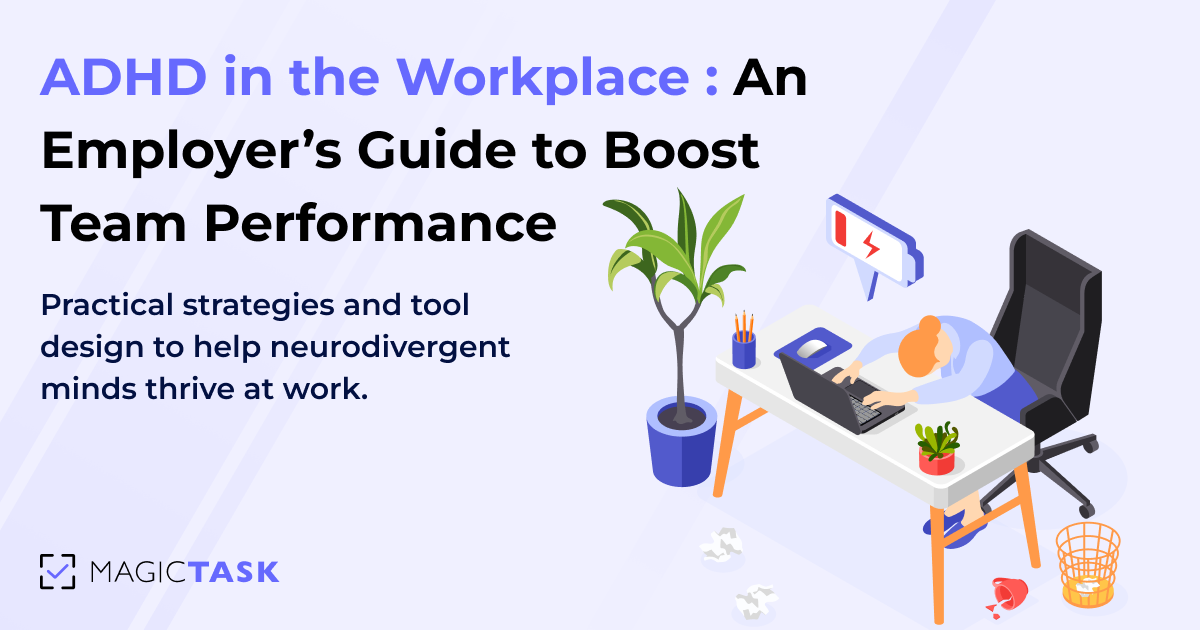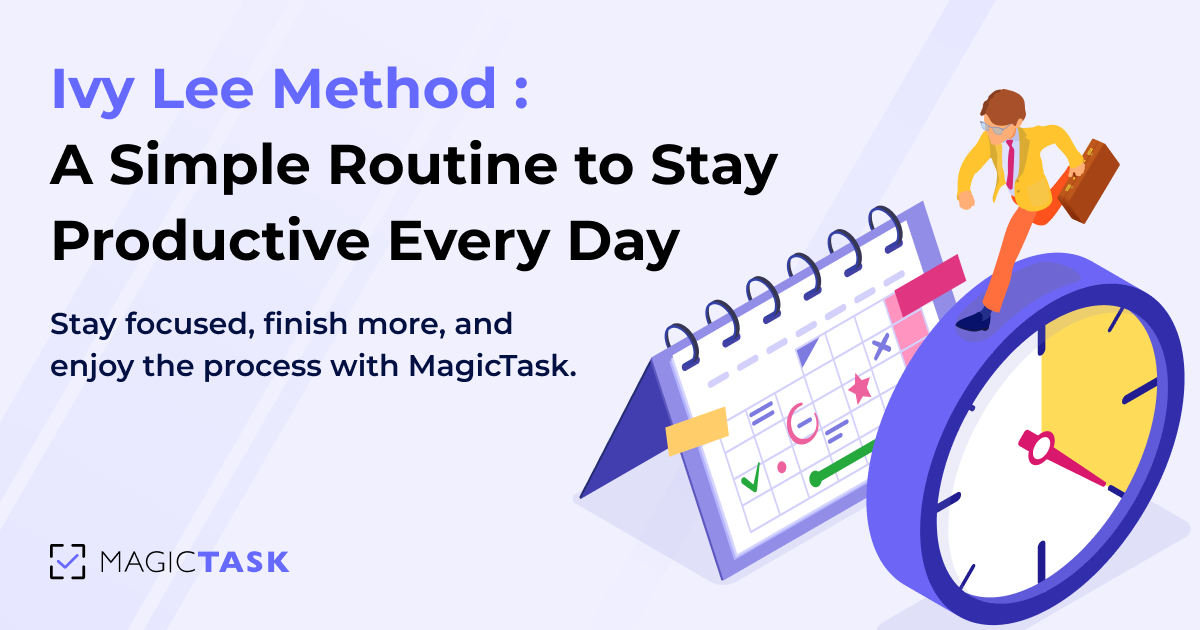How to Turn New Year Resolutions into Achievable Goals

Every year, millions of people set New Year’s resolutions with the hope of improving their lives—whether it’s getting fit, advancing in their careers, or picking up new habits.
Yet, studies show that nearly 80% of these resolutions fail by February, leaving many feeling frustrated and discouraged. The problem isn’t a lack of ambition but rather the absence of a clear plan to turn these aspirations into achievable goals.
In this blog, we’ll focus on practical, actionable steps to help you transform your New Year’s resolutions into attainable goals. By breaking them down, prioritizing effectively, and tracking progress, you’ll learn how to create a realistic roadmap to success—and stick to it.
Steps to Turn New Year Resolutions into Achievable Goals
Step 1: Find the Best Task Management Tool
To turn your New Year resolutions into achievable goals, you need a system that organizes tasks and keeps you motivated. Using a reliable task management tool—like MagicTask, Trello, or Todoist—can make the process smooth, structured, and engaging.
Why It Helps
- Keeps You Accountable: Defined tasks and deadlines ensure you stay on track.
- Breaks Down Goals: Large, intimidating goals become smaller, manageable steps.
- Boosts Motivation: Gamified and visual progress tracking makes completing tasks more rewarding.
How to Use a Task Management Tool
1. Choose the Right Tool: Select one that fits your workflow and goals:
- MagicTask: Gamifies task management to make prioritizing and completing tasks fun.
- Trello: Visualize tasks using boards and drag them through stages like “To-Do,” “In Progress,” and “Done.”
- Todoist: Organize tasks with priority levels and recurring deadlines to streamline planning.
- Asana: Use lists, timelines, and project folders to manage tasks with a clear structure.
- Notion: Customize task databases with flexible views, such as calendars or checklists.
2. Break Goals into Actionable Tasks: Turn your resolution into smaller, achievable steps.
Example: For the resolution “Start a blog”:
- Choose a blogging platform (by Jan 5).
- Write the first blog post draft (by Jan 12).
- Design the blog layout and publish it (by Jan 20).
3. Set Priorities: Label tasks by priority to focus on the most critical ones first (e.g., high, medium, low).
4. Track Progress: Use visual tools like checklists, project boards, or calendars to monitor your progress. Mark off milestones as you complete them to maintain motivation.
By combining tools like MagicTask, Trello, Todoist, or Asana, you can create a system that works for you. These tools ensure your resolutions are organized, actionable, and motivating—transforming goals into reality, step by step.
Step 2: Mind Dump Everything
Before you can turn your New Year resolutions into achievable goals, you need to clear your mind and get all your ideas out on paper (or screen). This process, known as a mind dump, allows you to capture every thought, task, and idea related to your resolution without worrying about organization or filtering.
How to Mind Dump Effectively
1. Set Up Dedicated Brain-Dumping Sessions
- Block out 2–4 sessions over the next few days. Each session can last 20–30 minutes.
- Choose a quiet space where you can focus without distractions.
- Use tools like notebooks, digital apps (e.g., Notion, Evernote), or simple task management tools to record your thoughts.
2. Write Without Filtering
- Don’t overthink—simply write down everything that comes to mind related to your resolution.
- Include big-picture goals, small tasks, ideas, concerns, or even random thoughts. For example:
-
- “Write two blog posts every month.”
- “Sign up for a gym membership.”
- “Learn meal prepping.”
- “Research beginner’s yoga videos.”
3. Categorize After the Dump
-
Once you’ve listed everything, group similar tasks into categories like:
- Actions: Tasks you can directly act on (e.g., “Buy running shoes”).
- Ideas: Concepts or goals that require refinement (e.g., “Start a fitness journal”).
- Resources: Things you need to research or learn (e.g., “Look for online writing courses”).
Benefits of Mind Dumping
- Clears Mental Clutter: By getting everything out of your head, you’ll reduce stress and make room for clearer thinking.
- Provides a Comprehensive View: You’ll have a clear overview of everything that needs attention—no tasks or ideas get forgotten.
- Eases Prioritization: Once you’ve captured everything, it’s easier to identify priorities and break tasks into manageable steps.
Step 3: Prioritize Your Goals
Once you’ve brainstormed everything related to your resolutions, the next step is to prioritize. Not all tasks hold the same value or urgency, so it’s important to focus your energy where it counts the most.
By organizing your goals strategically, you can ensure consistent progress while avoiding overwhelm.
How to Prioritize Effectively
1. Use the Eisenhower Matrix
This simple yet powerful framework helps you sort tasks based on urgency and importance:
- Urgent & Important: Do these tasks immediately.
- Important but Not Urgent: Schedule these tasks for later.
- Urgent but Not Important: Delegate or minimize these tasks.
- Neither Urgent Nor Important: Eliminate or defer these tasks.
Example for “Start a Fitness Routine”:
-
- Urgent & Important: Buy gym gear, schedule workouts this week.
- Important but Not Urgent: Research long-term fitness plans.
- Urgent but Not Important: Reply to a friend’s question about workout apps.
- Neither Urgent Nor Important: Organize workout playlist (save this for later).
2. Focus on High-Impact Activities
Not all tasks contribute equally to your goals. Identify the activities that will have the biggest impact and prioritize those first.
- Example: If your goal is to improve writing skills, high-impact activities might include completing a daily writing challenge or attending a writing workshop. Low-impact activities might be redesigning your writing space.
3. Apply “Eat the Frog” Strategy
Mark Twain’s famous productivity strategy suggests tackling your most difficult or daunting task first. By completing the hardest task early, you’ll feel accomplished and set a productive tone for the day.
- Example: If your resolution is to learn a new skill, start with the most challenging topic or module instead of procrastinating it.
Tips for Staying Consistent
- Set Priorities Weekly: Spend 15 minutes at the start of each week reviewing and adjusting your priorities.
- Limit Daily Focus: Choose 3–5 key tasks to complete each day to prevent burnout.
- Revisit Goals Often: Periodically check if your priorities still align with your overarching resolution.
By prioritizing tasks using frameworks like the Eisenhower Matrix and focusing on high-impact activities, you’ll create a clear roadmap for progress. Starting with the hardest task ensures momentum and keeps procrastination at bay.
Step 4: Break Goals into Manageable Steps
Big, ambitious goals can feel overwhelming if they aren’t broken down into smaller, actionable steps. By defining clear and specific tasks, you make progress more tangible and easier to achieve, building momentum along the way.
How to Break Goals into Steps
1. Start with the Big Picture
-
- Write down your overall goal in its broadest sense.
- Example: “Get fit in 2024.”
2. Define Smaller, Specific Tasks
-
- Transform the broad goal into clear, actionable steps that can be scheduled and tracked.
Example:
-
-
- Broad Goal: “Get fit in 2024.”
- Smaller Steps:
-
- Run 3 times a week for 30 minutes.
- Strength train twice a week.
- Drink 8 glasses of water daily.
-
3. Set Milestones
Divide tasks into short-term (weekly), mid-term (monthly), and long-term (quarterly) milestones to measure progress.
Example for Fitness:
-
-
- Week 1: Complete 2 running sessions.
- Month 1: Run consistently 3x/week.
- Quarter 1: Lose 5 pounds or increase running endurance.
-
4. Make Tasks Measurable and Time-Bound
-
- Use deadlines and metrics to ensure clarity.
- Avoid vague tasks like “Eat healthy.” Instead, specify “Meal prep every Sunday for the week.”
Why Clarity Matters
- Reduces Overwhelm: Smaller, defined steps make even the largest goals feel manageable.
- Builds Momentum: Completing a small task gives you a sense of accomplishment, encouraging you to move to the next one.
- Ensures Focus: Clear tasks eliminate ambiguity and allow you to concentrate on specific actions.
Example in Action
Resolution: “Write a Novel.”
- Broad Goal: Finish a 50,000-word novel by December.
- Actionable Steps:
-
- Write 500 words daily (starting Jan 1).
- Research plot structure and outline by Jan 15.
- Complete the first draft by June 30.
- Edit one chapter weekly starting July.
Pro Tip
Use task management tools like MagicTask or Asana to organize these smaller steps into projects or folders. Tracking progress visually keeps you motivated and ensures no steps are overlooked.
Breaking down your goals into actionable, specific tasks isn’t just about organization—it’s about creating a roadmap that leads to real, measurable success.
Step 5: Schedule Time for Daily Planning
Effective planning is the cornerstone of turning resolutions into achievable goals. Dedicating a small window of time each day to organize and prioritize your tasks can transform your workflow, helping you stay on track and adapt to unforeseen changes.
How to Plan Daily Effectively
1. Dedicate 15–30 Minutes for Planning
-
- Choose a time that works best for you:
-
- Evening: Reflect on the day and prepare for tomorrow while your priorities are fresh.
- Morning: Set your focus before diving into the day’s work.
- Use this time to review tasks, set priorities, and ensure alignment with your larger goals.
2. Apply Time-Blocking
-
- Divide your day into focused intervals for specific tasks or activities.
- Example:
-
- 9:00–10:30 AM: Deep work on Project X.
- 10:30–11:00 AM: Respond to emails.
- 2:00–3:00 PM: Exercise or personal goal.
3. Account for Buffer Periods
-
- Life is unpredictable, so include buffer times between tasks for unexpected delays or last-minute changes.
- Example:
-
- Schedule 15 minutes after meetings or large tasks to catch up on emails, regroup, or take a breather.
4. Review Progress
-
- At the end of each day, evaluate which tasks were completed and adjust the next day’s plan if needed.
Why Daily Planning is Crucial
- Improves Focus: Knowing exactly what to work on eliminates decision fatigue and distractions.
- Increases Productivity: Time-blocking ensures every task gets attention, reducing wasted time.
- Reduces Stress: A well-organized plan provides clarity and control, even on busy days.
Example in Action
Daily Plan for Fitness Goal:
- 7:00–7:30 AM: Morning run (3 miles).
- 12:00–12:15 PM: Hydration and meal prep check.
- 6:00–6:30 PM: Strength training session.
Daily Plan for Writing Goal:
- 9:00–10:00 AM: Write 500 words.
- 10:00–10:15 AM: Take a short break.
- 7:00–7:30 PM: Review and edit draft.
Pro Tip
Use digital calendars or planning apps like Google Calendar, MagicTask, or Notion to set reminders and create a visual layout of your day. This ensures nothing slips through the cracks.
A consistent daily planning habit keeps you organized, proactive, and prepared for anything, turning your resolutions into a series of attainable steps.
Step 6: Build and Maintain Habits
Resolutions become reality when they evolve into daily habits. However, building sustainable routines requires gradual changes and consistent effort. By introducing small, manageable adjustments and leveraging tools like the Pomodoro Technique, you can create habits that stick.
How to Build and Maintain Habits
1. Introduce Changes Gradually
-
- Avoid overhauling your schedule overnight. Start small and increase commitment over time.
- Example: If your resolution is to exercise regularly, begin with 10-minute sessions three times a week before increasing duration or frequency.
2. Leverage the Pomodoro Technique
-
- This time-management method helps you stay focused while avoiding burnout:
-
- Work for 25 minutes (a Pomodoro).
- Take a 5-minute break.
- After 4 Pomodoros, enjoy a longer 15–30-minute break.
- Example for Writing: Write consistently for 25 minutes, take a short stretch break, and repeat.
3. Anchor New Habits to Existing Routines
-
- Pair new habits with established ones to create automatic triggers.
- Example: If your goal is to read more, make it part of your evening routine after brushing your teeth.
4. Track Progress and Celebrate Wins
-
- Use a habit tracker to monitor consistency and visualize your streaks.
- Celebrate small milestones to maintain motivation.
- Example: Reward yourself with a favorite treat after completing a 10-day streak of morning workouts.
The Importance of Balance in Habits
- Consistency Over Perfection: Missing a day doesn’t mean failure. Refocus and start again the next day.
- Balancing Focus and Breaks: Use structured work intervals, like the Pomodoro Technique, to maintain energy and avoid mental fatigue.
Example in Action
Resolution: “Improve Focus at Work.”
- Gradual Change: Start with 1 daily Pomodoro session for focused work.
- Incorporate Habit: Schedule the session after your morning coffee to anchor it in your routine.
- Progress Tracking: Mark completed Pomodoros on a planner or app to visualize your growth.
Resolution: “Adopt a Healthier Lifestyle.”
- Gradual Change: Begin by replacing one unhealthy snack with a healthy alternative.
- Habit Building: Prep healthy snacks while making dinner to integrate it into your existing routine.
- Balance: Allow yourself a “cheat snack” on weekends to maintain flexibility.
By building habits step by step, you create routines that are not only effective but sustainable. Over time, these habits will compound, turning your resolutions into ingrained practices.
Step 7: Implement the Mindful Micro-Momentum Method (MMMM)
Achieving significant change doesn't always require grand gestures; often, it's the small, consistent actions that lead to lasting transformation. The Mindful Micro-Momentum Method (MMMM) emphasizes breaking down your goals into the tiniest, most manageable tasks and committing to them daily.
How to Apply MMMM
1. Identify Micro-Actions
-
- Dissect your overarching goal into the smallest possible steps—actions so simple they seem almost trivial.
- Example: If your goal is to write a novel, start by writing just one sentence each day.
2. Commit to Daily Practice
-
- Perform these micro-actions consistently every day, without exception.
- This daily commitment builds a habit and creates a sense of accomplishment.
3. Gradually Increase Complexity
-
- As these micro-actions become habitual, slowly expand their scope or duration.
- Example: After a week of writing one sentence daily, increase to writing a paragraph each day.
4. Maintain Mindfulness
-
- Stay present and fully engage with each micro-action.
- Mindfulness enhances the quality of your efforts and reinforces the habit.
Benefits of MMMM
- Builds Success Momentum: Each small win reinforces your belief in your ability to change, creating a positive feedback loop.
- Rewires the Brain for Success: Consistent micro-actions can reprogram your brain to expect and strive for success, making larger goals more attainable.
- Reduces Overwhelm: Focusing on tiny, manageable tasks prevents feelings of being overwhelmed, increasing the likelihood of sustained effort.
Example in Action
Resolution: “Adopt a Healthier Diet.”
- Micro-Action: Eat one piece of fruit each day.
- Daily Practice: Commit to this action every day for a week.
- Gradual Increase: In the following week, add a serving of vegetables to one meal daily.
- Mindfulness: Pay attention to the flavors and how your body feels after eating these healthy additions.
By focusing on these micro-actions, you create a foundation for lasting change. Over time, these small steps accumulate, leading to significant progress toward your larger goals.
Step 8: Leverage Accountability and Support
Achieving goals is often easier when you’re not doing it alone. Sharing your resolutions with supportive individuals or joining communities with similar aspirations creates a system of accountability and encouragement that keeps you on track.
How to Leverage Accountability and Support
1. Share Your Goals with Trusted Individuals
-
- Tell friends, family, or colleagues about your goals. Choose people who are genuinely supportive and can provide encouragement without judgment.
- Example: If your goal is to lose weight, share your fitness plan with a workout buddy who can motivate you to stick to your schedule.
2. Join a Community with Shared Aspirations
-
- Look for local or online groups aligned with your goals. Whether it’s a book club for avid readers, a fitness group, or a professional network, being part of a community fosters shared learning and motivation.
- Example: Join an online writing group if your goal is to write a book, where members share progress, tips, and feedback.
3. Establish Regular Check-Ins
-
- Schedule periodic updates with accountability partners or groups. These check-ins ensure you’re staying consistent and provide opportunities to troubleshoot challenges.
- Example: Have a weekly progress call with a mentor to discuss what you’ve accomplished and identify areas for improvement.
4. Be Open to Feedback
-
- Constructive criticism from others can help refine your approach and improve outcomes. Ensure your accountability partners feel comfortable providing honest input.
Benefits of Accountability
- Consistency: Knowing others are aware of your goals motivates you to stay committed.
- Encouragement: Support systems celebrate your wins and help you bounce back from setbacks.
- Mutual Growth: Groups or partners with similar goals often share insights, resources, and strategies that benefit everyone.
Example in Action
Resolution: “Run a Marathon.”
- Accountability Partner: Share your training plan with a running buddy or a coach who can monitor your progress.
- Community Support: Join a local running club or an online forum for marathon training to exchange tips and stay motivated.
- Check-In Routine: Set bi-weekly runs with your buddy and track performance metrics together.
Leveraging accountability and support creates a network of encouragement, ensuring you stay motivated and on track. The journey becomes more rewarding when you share it with others who inspire and challenge you to succeed.
Step 9: Practice Self-Compassion and Flexibility
Embarking on the journey toward your goals requires not only determination but also kindness toward yourself. Embracing self-compassion and adaptability ensures that you maintain motivation, learn from setbacks, and adjust to life's unpredictable nature.
How to Practice Self-Compassion and Flexibility
1. Acknowledge and Celebrate Small Victories
-
- Recognize and appreciate your progress, no matter how minor it may seem. Celebrating these achievements boosts morale and reinforces positive behavior.
- Example: Treat yourself to a favorite activity after completing a week of consistent workouts.
2. Be Kind to Yourself in Case of Setbacks
-
- Understand that setbacks are a natural part of any journey. Instead of self-criticism, approach yourself with empathy and view challenges as learning opportunities.
- Example: If you miss a planned task, reflect on the reasons without judgment and plan how to overcome similar obstacles in the future.
3. Adjust Goals to Accommodate Life's Unpredictability
-
- Life can be unpredictable; being flexible with your goals allows you to adapt without feeling defeated. Modify your plans to fit changing circumstances while keeping your end objectives in sight.
- Example: If a busy work schedule hinders your daily exercise routine, adjust by incorporating shorter, more intense workouts or rescheduling them to less hectic days.
Benefits of Self-Compassion and Flexibility
- Sustained Motivation: Celebrating small wins and practicing self-kindness keeps you motivated over the long term.
- Resilience: Viewing setbacks as learning opportunities builds resilience and reduces the fear of failure.
- Adaptability: Flexibility in your approach ensures that life's unpredictability doesn't derail your progress.
Example in Action
Resolution: “Learn a New Language.”
- Celebrate Small Victories: Reward yourself after mastering each new set of vocabulary words.
- Self-Kindness: If you struggle with pronunciation, remind yourself that making mistakes is a natural part of learning.
- Flexibility: Adjust your study schedule during particularly busy weeks to shorter, more frequent sessions instead of longer ones.
Practicing self-compassion and flexibility transforms your goal-setting journey into a more forgiving and adaptable process, allowing you to navigate challenges with grace and maintain progress toward your aspirations.
Step 10: Reflect and Adjust Regularly
Reflection is an essential part of achieving any goal. By assessing your progress regularly, you ensure your efforts remain aligned with your objectives and make necessary adjustments to accommodate changing circumstances. This practice keeps your goals relevant and attainable over time.
How to Reflect and Adjust
1. Schedule Monthly Reflection Sessions
-
- Dedicate a specific time each month to evaluate your progress. Use a quiet, distraction-free space to think critically about your achievements and challenges.
- Example: On the last Sunday of each month, review your accomplishments, note any setbacks, and refine your action plan.
2. Ask Key Questions During Reflection
-
- What worked well this month?
- Which tasks or strategies didn’t yield the desired results?
- Are my current goals still relevant and meaningful?
3. Adapt Goals as Needed
-
- Modify your goals based on your reflections. Life evolves, and so should your objectives.
- Example: If you initially planned to work out five days a week but find it unsustainable, adjust to three days with more intensity.
4. Set Mini Goals for the Next Month
-
- Break down your larger resolutions into actionable tasks for the upcoming month.
- Example: If your goal is to save $5,000 in a year, aim to save $420 in the next month by identifying specific spending cuts.
Benefits of Regular Reflection and Adjustment
- Ensures Continuous Improvement: Regular check-ins help you refine your approach, boosting your chances of success.
- Keeps Goals Relevant: Life changes, and periodic adjustments ensure your goals remain aligned with your priorities.
- Builds Self-Awareness: Reflection deepens your understanding of what motivates or hinders your progress.
Example in Action
Resolution: “Learn Digital Marketing.”
- Monthly Reflection: Review completed courses, analyze skills gained, and assess knowledge gaps.
- Adjustments: If video tutorials didn’t work well for you, switch to hands-on workshops or mentorship programs.
- Mini Goal for Next Month: Write one blog post applying newly learned SEO strategies.
By setting aside time to reflect and adjust regularly, you make goal-setting an evolving process. This approach ensures you stay on track, overcome roadblocks, and keep moving closer to achieving your aspirations.
Conclusion
Turning New Year’s resolutions into achievable goals requires more than just good intentions—it demands structured strategies and consistent effort.
By following steps like breaking down goals, leveraging accountability, and practicing self-compassion, you can transform lofty aspirations into realistic, actionable plans. Each step builds momentum, keeps you motivated, and ensures steady progress.
The journey toward achieving your goals starts with a single action. Whether it’s creating a plan, choosing a task management tool, or simply writing down your ideas, take the first step today.
Commit to your goals, stay flexible, and embrace the process—it’s not just about reaching the destination but growing along the way.




